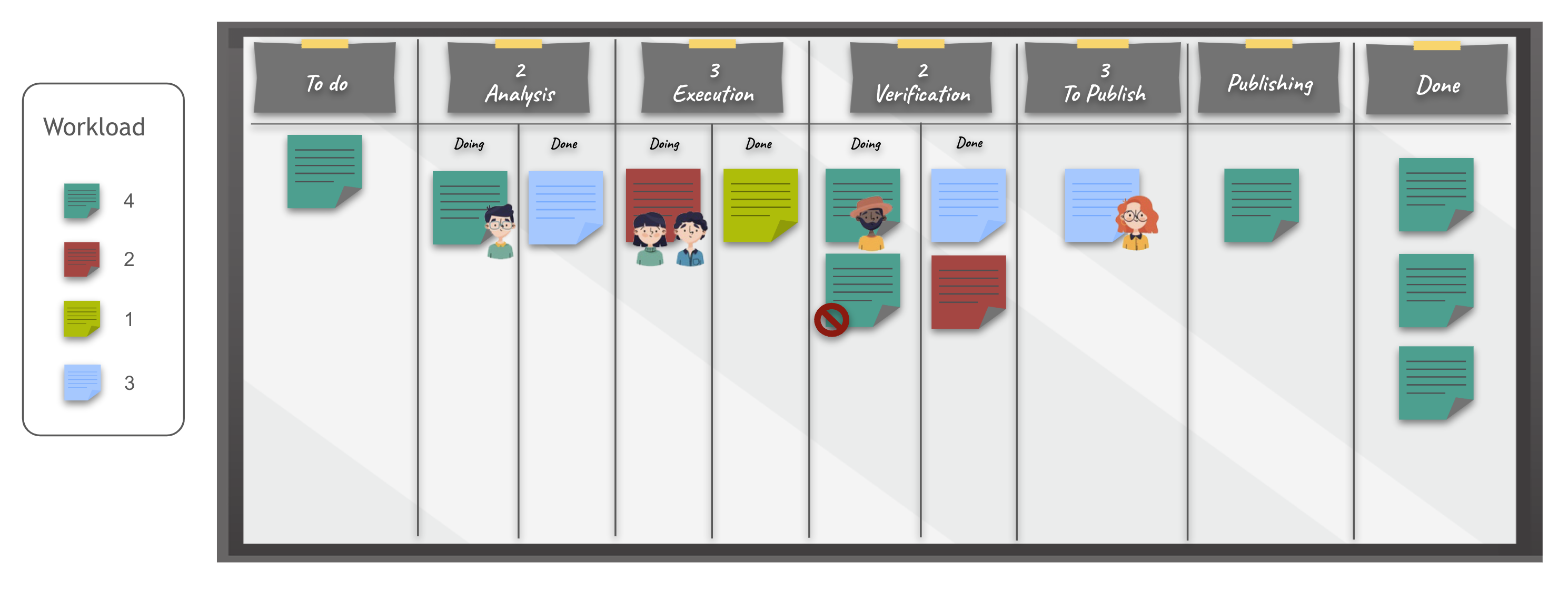Let's explore some scenarios where this occurs:
Scenario 1: he product has entered use/operation/sales, the customer starts using it, and what was once a single project becomes multiple initiatives. Fixing quality issues while the company wants to evolve the product further is necessary. On top of that, a new idea arises, and the company intends to leverage the team's knowledge to start a new product. This scenario's focus is divided among quality, evolution, and innovation.
Scenario 2: An agency handling small projects, possibly in marketing or software development, or architecture or legal projects that deliver small outputs. In this scenario, most projects are small, with about 1 to 4 weeks per delivery, and some more significant competing initiatives may emerge. Here, new initiatives come in constantly. When one project is completed, another begins; also, waiting periods in one initiative are used for another.
Scenario 3: In environments driven by demand, there is some similarity to the second scenario, but the initiatives are so small that allocation is calculated by topic or by the requester, not by initiative. It's necessary to balance which initiative to focus on at any given time, and all issues or requesters are competitors.
In these scenarios, common patterns are found in companies. If you try to solve these by allocating people and splitting them into teams, you will end up in an endless search for a solution and fail. You might blame failures on people, but the problem lies in the process and the best way to organize, not in the people.
So, let's talk about techniques that change your process and achieve tremendous success.
Workload Management
The three scenarios presented share a common need to manage the workload among the initiatives. To manage this, we need transparency about the amount of work in each initiative, a clear definition of the importance of each initiative, and a mechanism to combine these two aspects, making it visible at all times how the work is distributed.
By creating a visual management board with the classification of each piece of work, we can measure the volume of each initiative at any time. A Kanban board is an excellent solution for this.

In addition to the board, we need to define how many activities should be done in each initiative. The issue here is determining the volume, not the specific activity. The idea is to create the process, not just solve for Activity A or B.
The best mechanism is to express the amount in percentage or quantity and adjust the workload as needed. One initiative might have priority on a given date, or another might experience a drop in demand during a period; workload management should be a flexible mechanism and must be visible to function dynamically. It would be even better to automate workload management to direct people through automation.
Knowledge Sharing
Another common issue across the presented scenarios is the need to share knowledge among the people involved in the solution. This is extremely important because, with small activities and competition, there will always be situations where someone with the knowledge is busy and cannot pay attention to something. There will always be situations where the person available has yet to work on that activity and needs specific knowledge. Additionally, we will continue teaching; teaching and knowledge sharing must happen during work.
Therefore, sharing must be systematized, with pairings, standardization of techniques, and rotation of people. These techniques, as well as the workload management techniques and others that have been masterfully used by companies that have faced these scenarios, are grouped under the Unified Flow method.
To solve the scenarios presented in this article, change the process, create an environment where the workload is managed dynamically, share knowledge during work, visualize/manage the flow, and automate as much as possible.
In these scenarios, the best way to deal with demand is by unifying the demand flow; these scenarios are examples of working in a single flow or, more accurately, examples of Unified Flow.
Learn more in this article: What is Unified Flow?
Take our courses Unified Flow Fundamentals and Advanced Unified Flow, and learn more about these techniques in detail.


